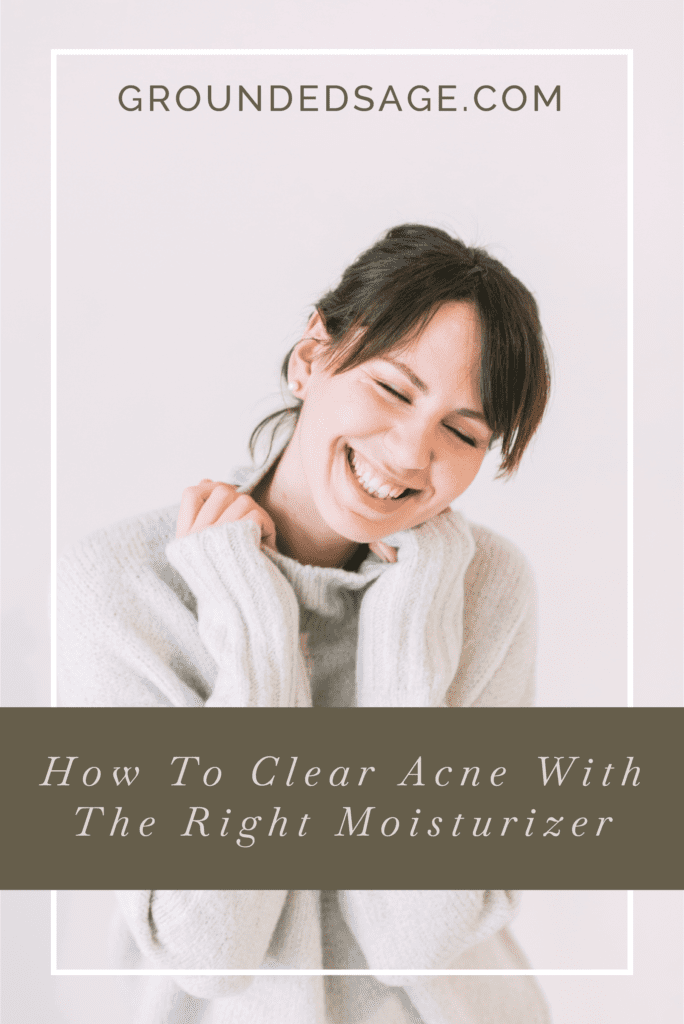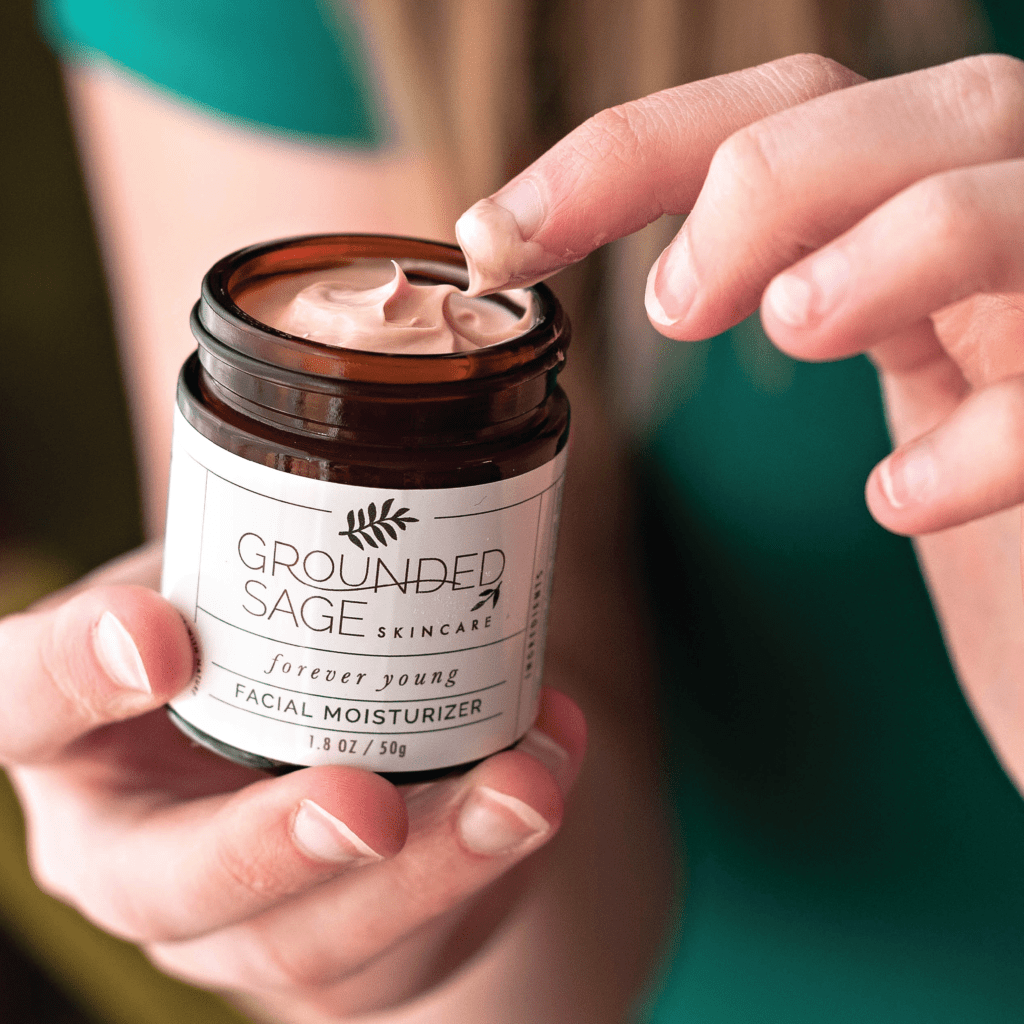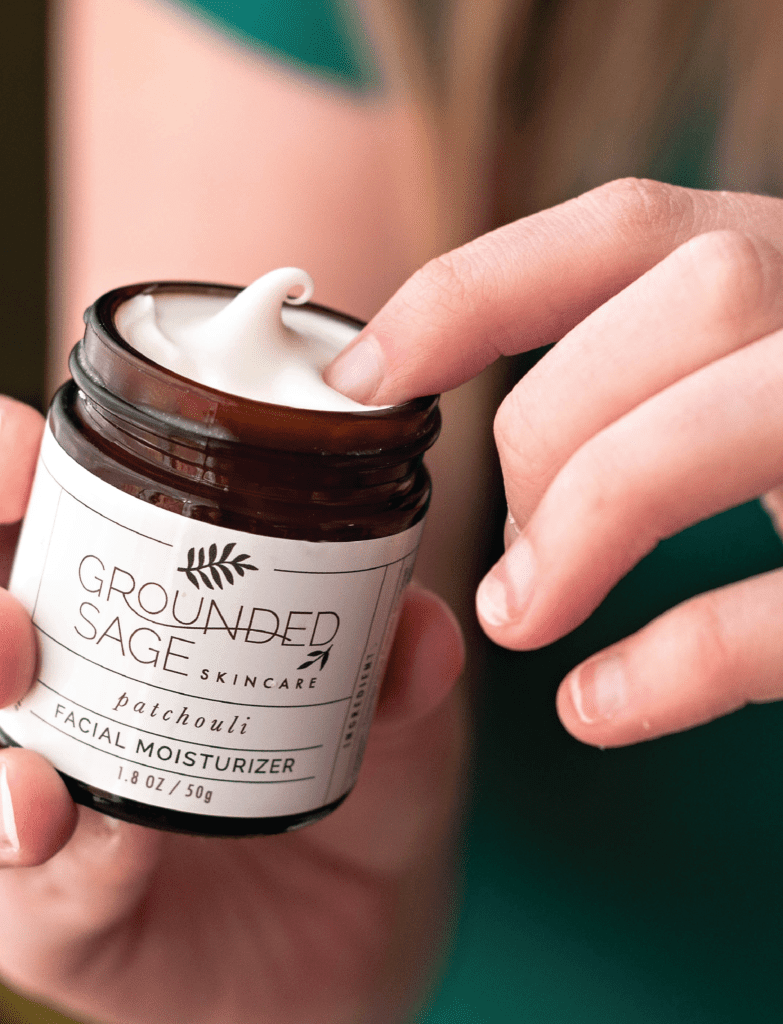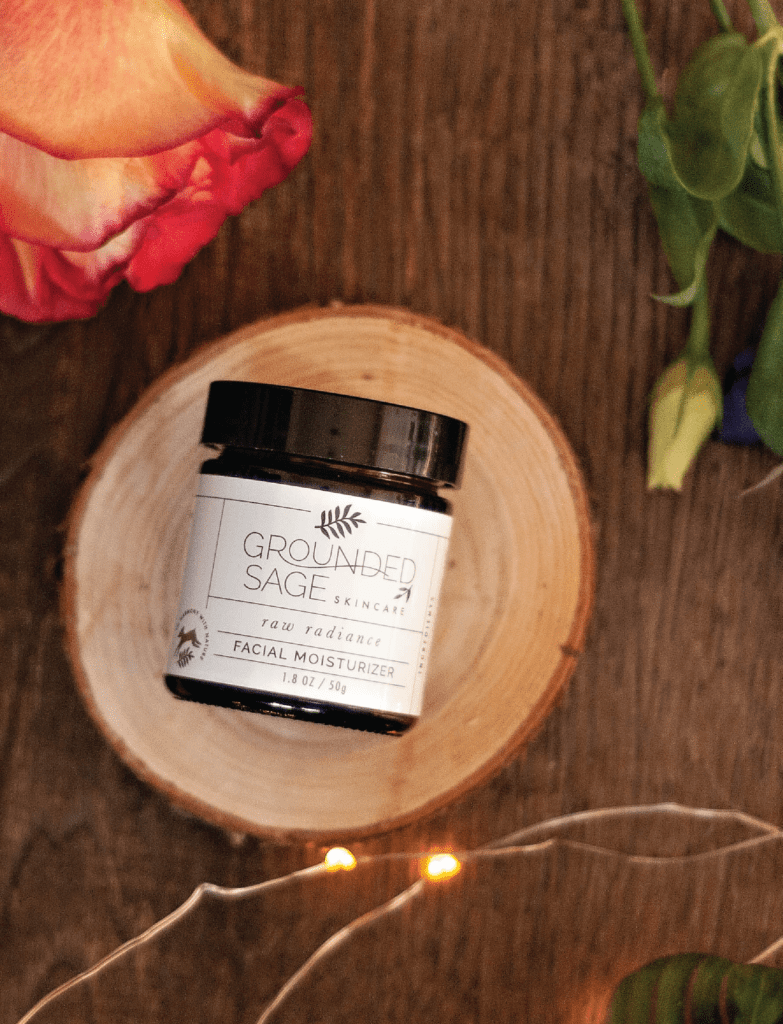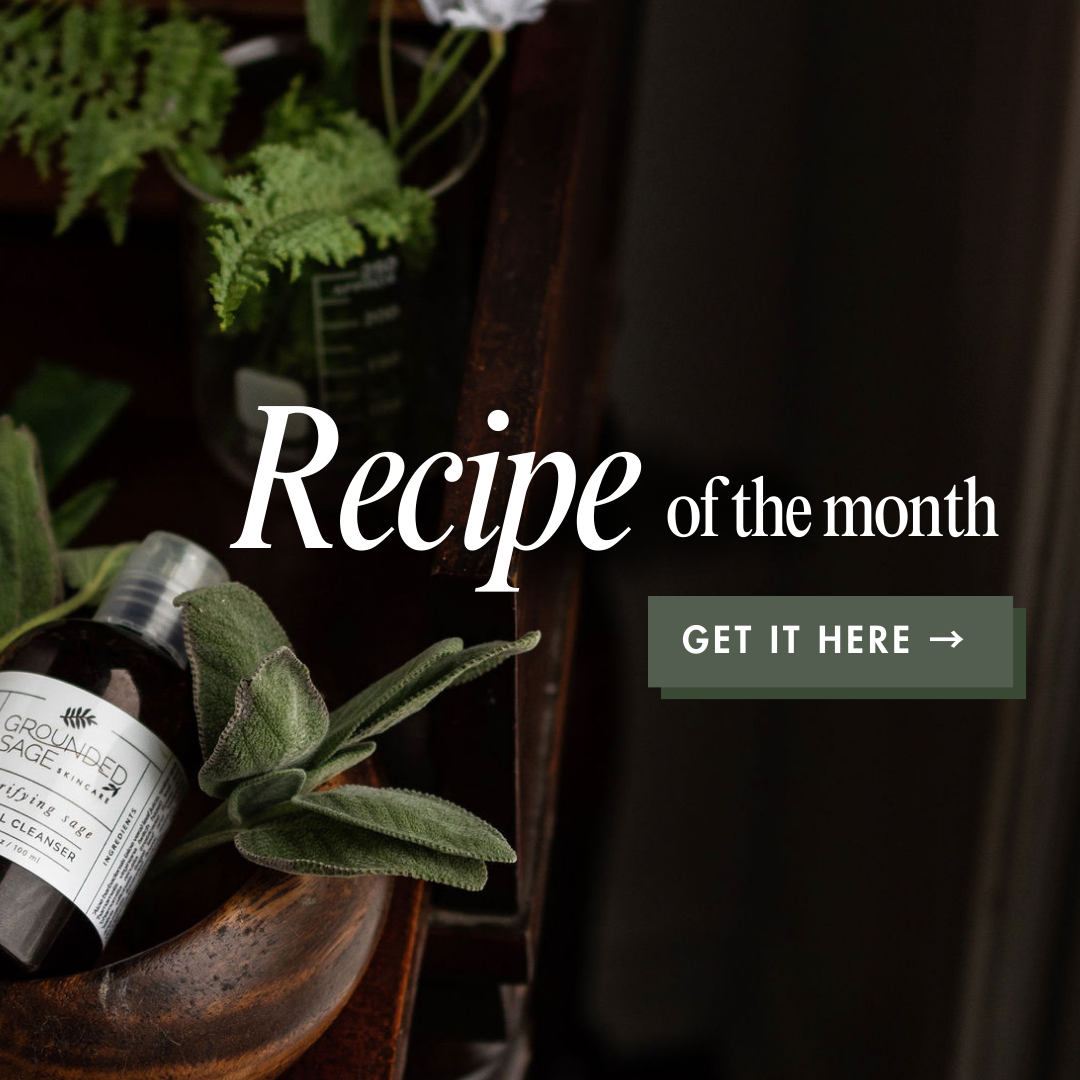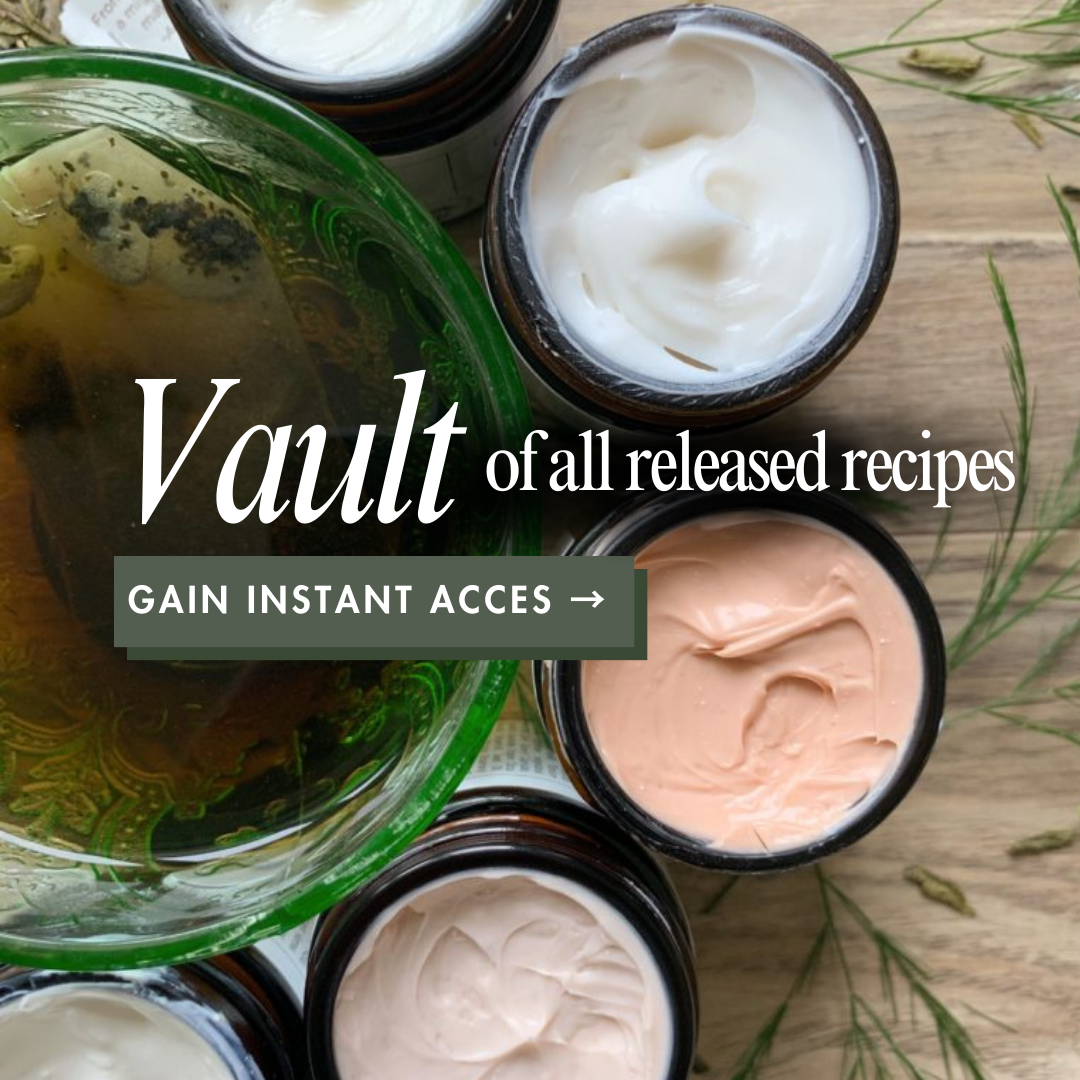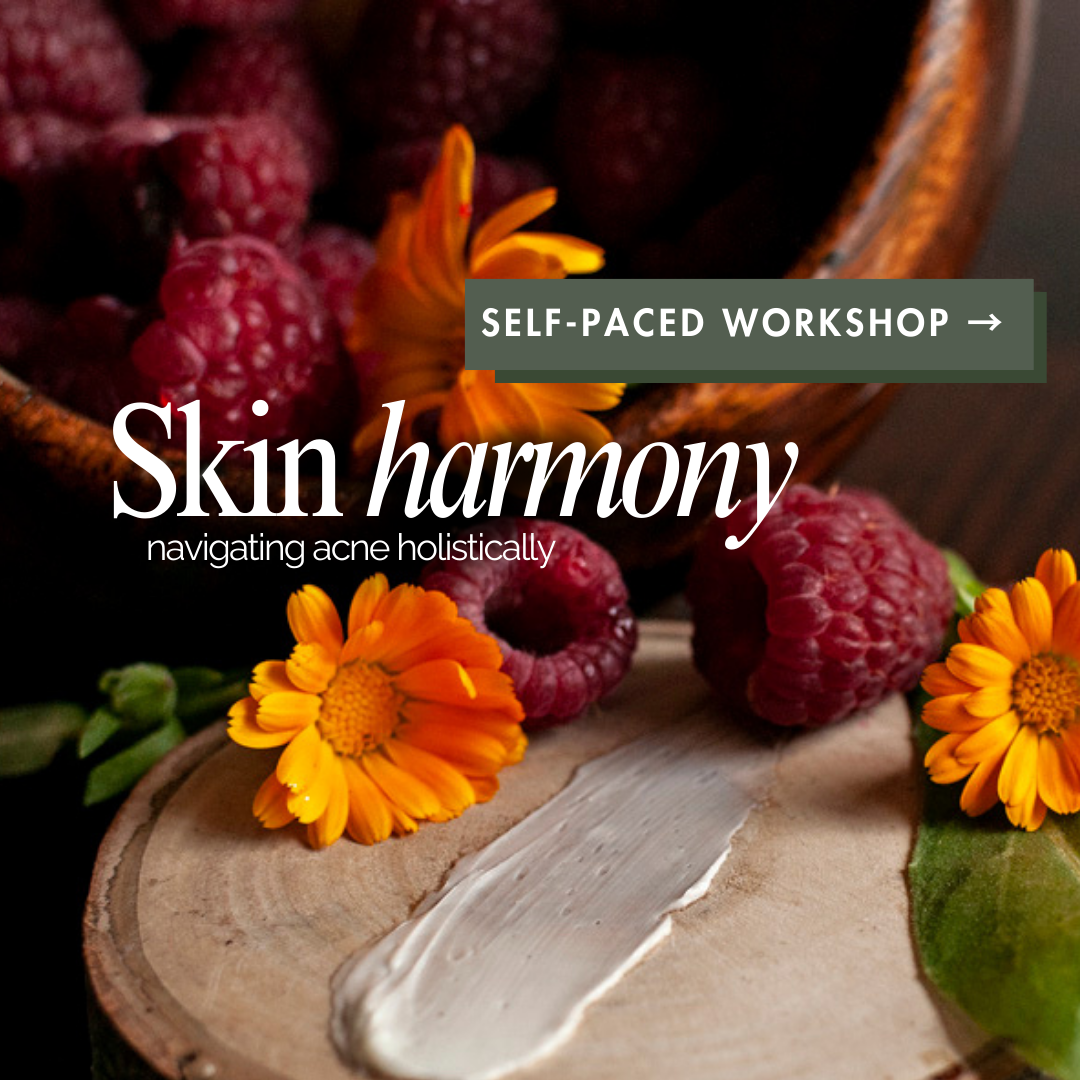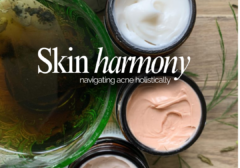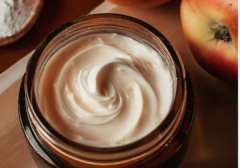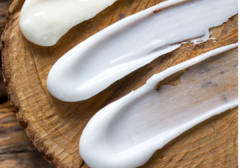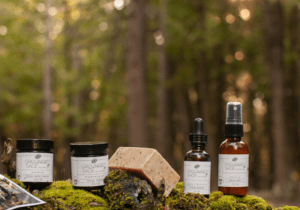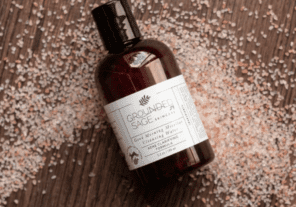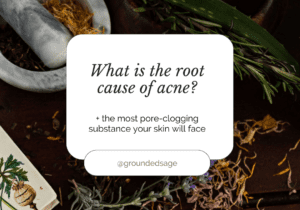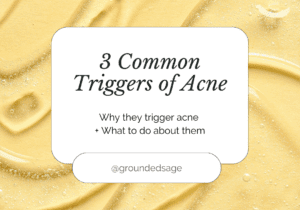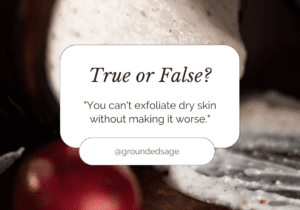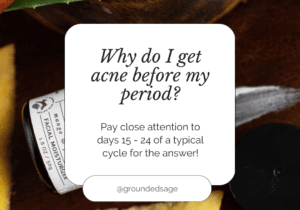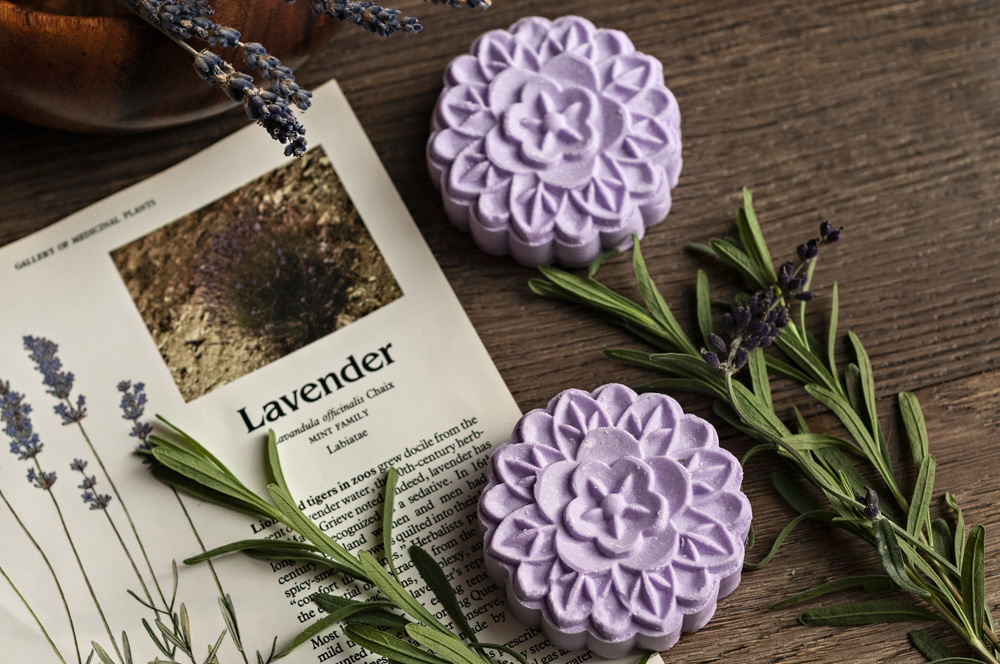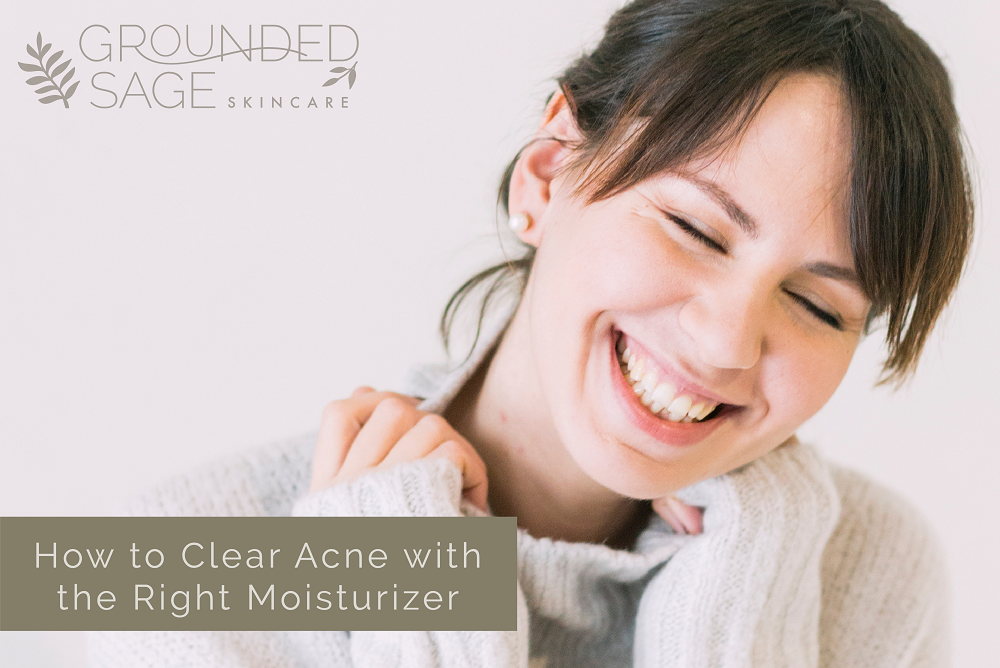
In previous articles in this series we…
- narrowed down your external triggers of acne (and how cleansers can help),
- found out if oil cleansing is right for your skin,
- discovered the two techniques for exfoliating acne prone skin (and figured out which is best for you), and
- we explored the number one missed step in acne busting routines (and how, without this step, clear skin may not ever be possible)
Now let’s talk about the second most missed step – a step that is not only the cherry on top of an acne busting routine, but is crucial in making sure all the effort you put into the rest of your routine, doesn’t go to waste!
Today we’re talking about moisturizing!
Before you run off – especially if you’re someone who always skips the moisturizing step (yes, even you gals fighting with oily skin!) – stick with me! I promise this is going to be eye-opening and useful!
Let’s start by talking about…
Why moisturizing is so important for acne (and oily) prone skin.
(Pst…If you suffer from acne and dry skin, or acne and combo skin, this is important stuff for you too.)
As we learned in this article, hydration is often the missing link to an acne busting routine.
In a nutshell, some of those reasons include lubricating your pores so oil, dead skin cells and debris can leave your pores easily and freely. When our pores aren’t well lubricated they get clogged, as nothing flows through them easily causing blockages. These blockages stop the oil that’s trying to pass through our pores. The oil dries out and TADA – we’ve got some serious congestion going on.

Now, what does this have to do with moisturizing?
To keep hydration in our pores (so they stay lubricated and clear), we need to stop that water content (the hydration) from being absorbed into thin air – literally. Hydration = water; water gets absorbed into the air (drawn out of our skin and out of our pores) when there’s no protective barrier. A moisturizer acts as a much needed protective barrier.
In fact, when we don’t have a protective barrier, our skin starts to produce more oil to make up for the lack of protection.
Before I move on to how we can use moisturizers as part of a protective barrier, I do need to mention that we actually do have some “build in” protection in the form of our lipid barrier (made up of our skin’s natural oils).
However, if our lipid barrier is depleted, or damaged, we can’t keep hydration in our skin, which (as we discussed above) leads to our body pumping out more oil in an effort to fix our lipid barrier. Even if our lipid barrier isn’t damaged, our body assumes it is if our skin isn’t well hydrated. For a refresher on how to hydrate your skin, head over here.
So as you see…
We need two key things to make sure we don’t encourage our skin to produce excess oil:
Adequate hydration + A strong protective barrier
How does our lipid barrier get damaged in the first place?
In the case of acne or oily prone gals, over-cleansing is often the reason why their lipid barrier is damaged or depleted. Although, other factors can wreak havoc on our protective barrier as well such as:
- UV rays
- harsh weather / winds / temperatures
- dry indoor air
- barrier damaging ingredients or treatments
- harsh scrubbing / exfoliating
- hot water
- etc, etc.
A balanced routine: Essential or just a luxury?
Now that you’ve made it this far, it’s not hard to see that our whole routine comes into play when we’re trying to stay breakout free. With each step in our routine, we could be damaging our protective barrier (picking the wrong cleanser or exfoliator, not hydrating, or failing to support our lipid barrier with a moisturizer). Any, or all, of these missed steps, can result in hydration loss, which leads to congestion, breakouts, rough/dull skin, dehydration, and more. Basically, leading us further and further from where we want our skin to be.
OK- so now we get why moisturizing actually HELPS us keep our skin from getting congested, from producing too much oil, and from breaking out…
But here’s where things can go really wrong.
If you use a barrier that doesn’t let oil flow out of it freely, we end up with congestion (exactly what we were trying to stop by putting a protective layer over our hydrating efforts). What we need is a barrier that let’s what we want out of our skin to be able to leave, and a barrier that keeps what we want in our skin to stay. Many moisturizers on the market contain ingredients that create a barrier that doesn’t let anything in or anything out. This ends up trapping excess oil, dead skin cells, and anything else our skin is trying to purge in the top layer of our skin. This can happen year round, but I see it coming to a head for most of our community in the fall.
This is also why a lot of people have problems with breakouts when they moisturize!
In fact, some of the worst moisturizers for this “trapping” effect are ones that are listed as “oil-free” and promoted as safe for acne-prone skin. How’s that for misleading!
Pst- learn about where “oil-free” comes from and why one of the biggest myths in skin care today is that oils cause breakouts here.
As you may have already guessed, moisturizers that are formulated to AVOID this trapping effect are made with great care to ensure our skin can breathe, while continuing to hold on to all that pore lubricating hydration! These acne -prone skin safe moisturizers don’t include ingredients that create a “plastic wrap” effect on our face.
But “trapping / plastic wrapping” ingredients aren’t the only ingredients that can contribute to breakouts caused by moisturizers.
Other ingredients that we need to watch out for are ones that increase inflammation. If acne is a flame, inflammation is the spark that lights the match! You can’t have one without the other and reducing and snuffing out inflammation is vital in an acne clearing skincare routine. Here’s where this ties back into our lipid barrier: when our barrier is depleted (thin), it’s also weak. A weak barrier has a harder time keeping out irritants and allergens. Both of which spark inflammation.
And that leads me to antioxidants.
Antioxidants are some of the most powerful anti-inflammatory ingredients found in nature. They can literally stop the progression of acne in its tracks. In fact, many studies have proven that key antioxidants (from natural ingredients) halt the cycle of acne by mopping up inflammation.
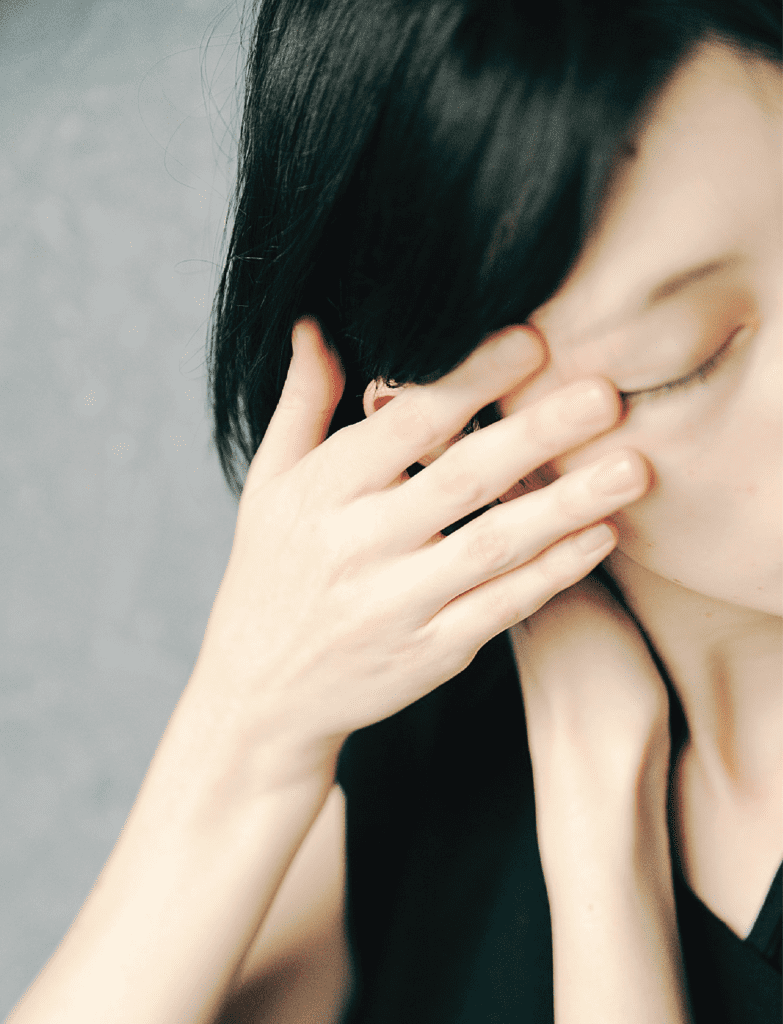
So, to summarize…
a moisturizer that’s safe for acne prone skin includes anti-inflammatory ingredients and breathable ingredients.
Anti-inflammatory ingredients stop the progression of acne and breathable ingredients hold in hydration to stop the cycle of congested pores.
A bad moisturizer for acne prone skin contains inflammation inducing ingredients (which irritate the skin and speed up the progression of acne) and barrier ingredients that don’t let anything in or out of our skin (perpetuating the cycle of clogged, congested pores which lead to blackheads and breakouts).
Now let’s look at what ingredients can help us maintain (or achieve) a healthy lipid barrier without trapping any oil, debris, or dead skin cells!
In other words, let’s look at…
What makes a great moisturizer for acne prone skin
 First, the ingredients are breathable
First, the ingredients are breathable
-
- Ingredients that are similar to our skin are ingredients that our skin understands. It knows how to use the components of these ingredients to repair itself. On the other hand, when we slather on something that’s not natural, pure, or uncomplicated for our skin, it doesn’t know what to do with it, it gets smothered, and congested.
-
- Breathable ingredients are ingredients that are lipid-rich and plant-based. Example: jojoba oil
 Second, the ingredients are anti-inflammatory
Second, the ingredients are anti-inflammatory
-
- Anti-inflammatory ingredients, as the name suggests will soothe and calm our skin thanks to their ability to bring down inflammation.
-
- These ingredients are often heavily packed with antioxidants. Example: green tea
 Third, the ingredients repair your barrier
Third, the ingredients repair your barrier
-
- Lipid-rich ingredients are the quickest and easiest way to repair and strengthen our lipid barrier.
-
- Plant oils are another barrier repairing ingredient because they are packed with essential fatty acids. EFAs feed the lipids that make up our barrier! EFAs also act as the building blocks of our skin – meaning our skin knows exactly how to use them to repair itself.
-
- Omega 6 and 9 are both particularly good for our skin. Example: sweet almond oil
 Fourth, the ingredients are targeted
Fourth, the ingredients are targeted
- Since we’re talking about acne prone skin and not just a moisturizer for everyone, we want ingredients that are added specifically to target acne such as anti-bacterial, calming, healing, nutrient + vitamin dense, astringent, etc. Example: patchouli essential oil
Let’s see these ingredients in action
… by looking at the key ingredients in 2 of our most popular acne targeting moisturizers.
Each ingredient is tagged according to this legend:
B = breathable
AI = anti-inflammatory
R = barrier repair
T = targeted specifically for acne
Patchouli Facial Moisturizer
- Cocoa Seed Butter – R | T | B
- Shea Butter – R | T | AI | B
- Grape Seed Oil – T | AI | B
- Vegetable Glycerol (Soy) – T | R | AI | B
- Japanese Green Tea Extract – AI | T | B
- Patchouli Essential Oil – T | B
- Coconut Oil – T | B | R | AI
- Mango Butter – T | B | R | AI
- Cupuacu Butter – T | B | R |
- Palm Oil (organic and certified sustainable) – B | R | AI
- Stearic Acid (natural plant-based fatty acid) – R | B
- Caprylic/Capric Triglyceride (derived from coconut & glycerin) – R | B
- Titanium Dioxide (natural oxide – non nano) – T | B
- Vitamin E – soy-derived – T | AI | R | B
- Rosemary Extract – B | T |
Raw Radiance Facial Moisturizer
- Aloe Barbadensis Leaf Juice – AI | T | R | B
- Jojoba Oil – R | T | AI | B
- Argan Oil – R | AI | B
- Grapefruit Seed Oil – T | R | AI | B
- Vegetable Stearic Acid (natural plant-based fatty acid) – R | B
- Hyaluronic Acid (vegan) – T | B
- Vegetable Glycerin – AI | T | R | B
- Avocado Oil – R | AI | B
- Sunflower Oil – R | B
- Calendula Oil – R | B
- Green Tea Extract – AI | T | B
- Licorice Root Extract – AI | T | B
- Kakadu Plum Extract – T | AI | B
- Cucumber Extract – T | AI | B
- Mulberry Extract – T | AI | B
- Golden Seal Extract – T | AI | B
- Cromoist Hydrolysed Oat Protein – R | AI | T | B
- Lavender Essential Oil – T | AI | B
- Vitamin B3 – T | B
- Vitamin C – T | B
- Zinc – T | B
- Vitamin E (soy derived) – T | AI | R | B
What about our other moisturizers?
You can find more about them here.
Which moisturizer is right for your skin?
Before I sign off for the day, let’s go over some questions that may have come up while exploring this article.
Frequently Asked Questions
How long does it take to repair my lipid barrier?
It takes 28 to 35 days for our skin to have a complete turnaround and typically 30 days for our skin to repair itself.
During this time you might find that you continue to experience the common signs and symptoms of a depleted lipid barrier, even if you’re doing all the right things to support it.
Besides moisturizing, what can I do to support my natural barrier?
-
- Make sure you’re using a cleanser and exfoliator that’s appropriate for your skin – see this article to figure out the best cleanser and this one for the best exfoliator.
-
- Make sure you’re not over cleansing or scrubbing too hard (both are super common mistakes!). The links mentioned in the point above can help with this.
-
- Avoid irritating, toxic, and pore-clogging ingredients like propylene glycol and sulfates.
-
- Start hydrating. Find out how here.
- If any products you use while you’re building back your barrier sting, burn, or leave your skin feeling really tight or dry, stop using them! Don’t try reintroducing these products for at least a month and a half.
When and how often should I moisturize?
Moisturize after applying your hydrator (apply your hydrator after cleansing/exfoliating).
So ideally, each time you cleanse you should be hydrating and moisturizing.
For many, this is twice a day.
For those with super sensitive skin, this will be once a day. If you find yourself in this boat and are wondering whether you should be cleansing in the morning or in the evening (if you’ll only be cleansing once), opt for the evening. In the morning, simply splash your face with water, pat dry, then apply a hydrator and moisturizer.
Have additional questions that I didn’t answer here? No problem!
Ask them in our private community by becoming a Radiant Rebel and get an answer lickety-split!
See you in the community!
Until next time,

Pin this article for later:
